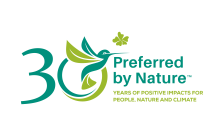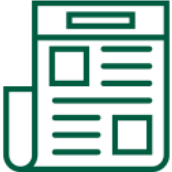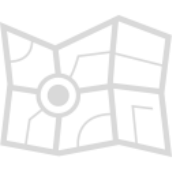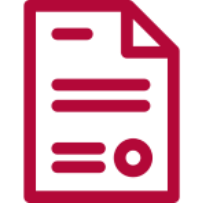Timber Risk Score: 17 / 100 in 2017. The Timber Legality Risk Assessment contains an evaluation of the risk of illegality in Mexico for five categories and 21 sub-categories of law. We found:
- Specified risk for 14 sub-categories.
- Low risk for 1 sub-categories.
- No legal requirements for 6 sub-categories.
This page provides an overview of the legality risks related to timber produced in Mexico.
33.5 % (66.1 million ha) of Mexico is covered by forests of which:
- About 50% is primary forest
- About 50% is naturally-regenerated forest
Roundwood production totalled 44.2 million m3 in 2015. The forestry sector (including wood processing and pulp and paper) contributed USD 7.0 billion to the economy in 2011, or nearly 0.6% of the GDP.
Several legality risks are present in Mexican timber supply chains. The risks relate to legal rights to harvest, taxes and fees, timber harvesting activities, third parties’ rights and trade and transport. Companies sourcing timber from Mexico should take care to ensure the risks identified are not present in their supply chains, or have been sufficiently mitigated.
Score: 31 / 100 in 2021
Rank: 124 out of 180 countries in 2021
There is an unchanging conflict status in Mexico because of criminal violence, according to the Council on Foreign Relations' Global Conflict Tracker.
According to the Uppsala Conflict Data Program there were 14565 deaths from 2010-2019.
FSC Certified Forest Area:1,294,337 hectares (4 December 2019).
Information Gathering
Timber sources
- Find out the different sources of legal timber
- Determine which Source Type your timber comes from
| Timber sources | Licence/permit type |
|---|---|
|
Temperate forest with no species in the “at-risk” category |
Timber from communal and privately owned forest with no “at risk” species. A large proportion of timber produced in Mexico comes from the Pinus, Abies and Quercus genera. States include Chihuahua, Durango, Oaxaca, Guerrero, Michoacan, Jalisco, Chiapas and portions of Central Mexico. |
| Temperate forest with "at risk " species |
Timber from communal and privately owned natural temperate forest that contains “at risk” species. Harvesting is relatively small-scale and can occur in any state in the country. Harvesting has been observed in Jalisco, Michoacan, Oaxaca, Chiapas and in transition zones from tropical forests to cloud forests. |
| Tropical forest |
Timber from communal and privately owned natural forest in tropical areas. Forest types include tall, medium, and low evergreen rainforest. Harvesting of tropical forests occurs mostly on the Yucatan Peninsula (Quintana Roo, Tabasco, Campeche, Yucatan) and to a lesser extent in portions of the Pacific foothills and coast (including Nayarit, Jalisco, Colima, Michoacan, Guerrero, Oaxaca and Chiapas) and on the Atlantic Coast in Veracruz. |
| Plantations |
Timber from communal and privately owned plantations of native and exotic species. |
Risk Assessment
Risk assessment summary
|
Legal rights to harvest
|
|
|
Taxes and fees
|
|
|
Timber harvesting activities |
|
|
Third parties' rights
|
|
|
Trade and transport
|
|
Risk Mitigation
Mitigate the risks in your supply chain
- Learn which actions we recommended to mitigate the risks associated with the timber sources from Mexico.
Source Certified Materials
NEPCon believes that third party certification (for example FSC and PEFC certification) can provide strong assurances of the legality of the products they cover. Companies seeking to mitigate the risks of sourcing illegal timber should seek to purchase third party certified materials wherever possible.
While the European Timber Regulation does not include an automatic “green lane” for certified products, it does recognise the value of certification as a tool for risk assessment and mitigation. The European Commission says that companies “may rate credibly certified products as having negligible risk of being illegal, i.e. suitable for placing on the market with no further risk mitigation measures, provided that the rest of the information gathered and the replies to the risk assessment questions do not contradict such a conclusion.”
For more information on using certified materials in your due diligence, including how to assess whether a certification system meets EUTR requirements, see the page on Certification and Due Diligence.
Mitigation recommendations
Below is a summary of recommended actions to mitigate the risks associated with timber sources from Mexico.
1. Fully map your supply chain
- Our supply chain mapping tool can help you do this.
2. Obtain and verify documents
- Forest level documents
- Documentation that reflects the process for authorisation of the Programme for Forest Management (Programa de Manejo Forestal) and/or the Environmental Impact Statement, including harvesting reports as well as complementary information such as maps showing management areas and neighbouring areas (for Tropical forests).
- Commitment to reforestation or commitments established in the Programme for Forest Management (Programa de Manejo Forestal) (for Tropical forests)
- Authorised Programme for Forest Management (Programa de Manejo Forestal) with authorisation for the extraction of of at-risk species (Management of a UMA), or Proof of Plantation Registration (Constancia de Registro de Plantación)
- Annual reports presented to SEMARNAT on the impact of harvesting and to compliance with Programme for Forest Managements.
- SEMARNAT harvest authorisation
- Documented silviculture and environmental monitoring system
- FMU Technical Prevention Audit report
- Forest Permit (Remisiones Forestales for natural forests) or Forest Re-shipment (Reembarque Forestales for plantations)
- Annual harvesting reports
- PROFEPA district reports – review to identify the degree of compliance with environmental protection measures. In addition, obtain information about administrative procedures
- Assembly minutes documenting indigenous community’s granting of free access to forest resources, in accordance with customary rights, if property is community-owned
- Tax related documents
- Tax Identification Number (Cédula de Identificación Fiscal)
- Invoices by the timber providers (verify that invoices contain taxes, and species, volumes, and prices of timber are in accordance with the description on the invoice)
- Cross-check between invoices issued with permits and/or forest shipments
- Monthly value-added tax returns
- Annual tax returns
- Health and safety related documents
- Enrolment of workers in the IMSS (Instituto Mexicano del Seguro Social)
- Enrolment of workers in public insurance (Seguro Popular)
- Contracts with private clinics for the provision of medical care
- Employment related documents
- Labour contracts between employer and employee
- Workers’ enrollments in public insurance (Seguro Social) or contracts with private insurance
- Trade and transport documents
- Annual reports presented to SEMARNAT
- Sales documents (verify product classifications including species, quantities, qualities are correct)
- Timber sale-purchase agreements in which the volumes and species included are specified
- Income and transactions books, which clearly shows the data (provider, document number, date, species, quality, etc.) from the documents concerning material entering and leaving the country, and in the case of processing companies, review matters relating to conversion of land
- Export documents
- CITES certificates
3. Consult with stakeholders
- Workers confirm that they have the freedom to legally organise and exercise their rights.
- Workers identify salary ranges and verify that these correspond to legislated minimum salary
- Workers involved in forest harvesting and/or transportation confirm that they are provided health and safety training relevant to their responsibilities, and that they are aware of measures in place to protect their health and safety on the job
- SEMARNAT confirms the property does not contain at-risk species (if that is supposed to be the case)
- Indigenous communities or organisations working with indigenous communities confirm that they have granted free access to forest resources (if that is supposed to be the case)
- The UMA confirms that harvesting authorisation for at-risk species has been granted or authorisation of the Programme for Forest Management within the Protection Area or communally-owned reserves has been granted
4. Carry out on-site verification
- Confirm that harvesting takes place within the borders of the property
- Confirm that only authorised species are harvested
- Confirm that the management plan is implemented, especially with regard to minimum cutting diameter, species, volumes, maintenance of the residual timber stand, respect of at-risk species and maintenance of protection areas
- Confirm that protective measures are implemented for water sources, soil erosion, use of chemical products, transport during suitable periods and other environmental measures
- Confirm that workers are trained in the areas of health and safety and that regulations are implemented
- Confirm that technical and operations personnel implement measures for personal protection and use of safety equipment compatible with the work they perform, and measures to prevent workplace accidents
- Confirm that the preventive or mitigation measures proposed in the Programme for Forest Management are implemented
5. Conduct targeted timber testing
- Conduct timber testing on samples of purchased material to verify the species or origin of timber, where appropriate
6. Avoid / do not buy
- Avoid products that include materials bought at spot- and/or open-markets














